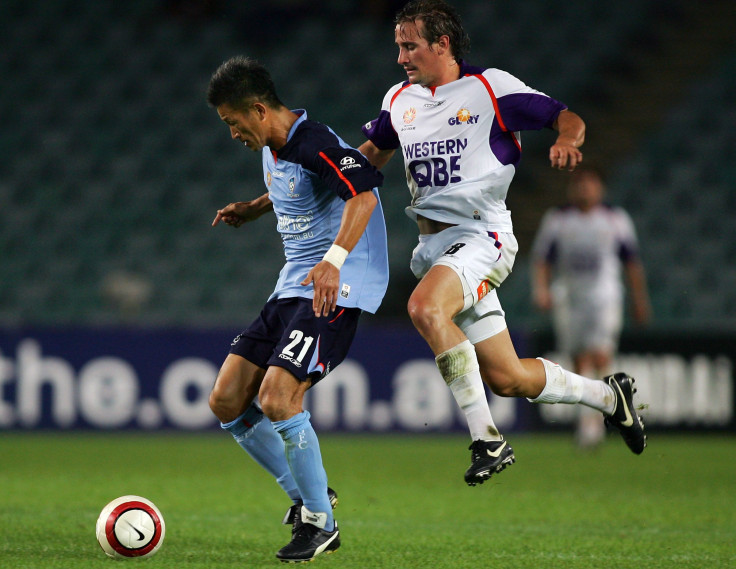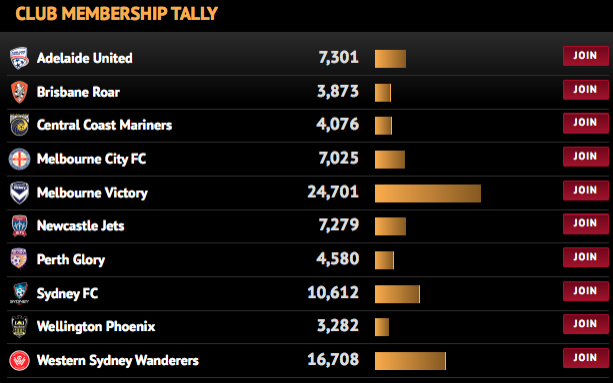Hyundai A-League Season Opening Weekend: How does the A-League stack up against the AFL and NRL?

The Hyundai A-League is back in action for its 11th season as a professional footballing code, but what has round one revealed about the game’s ability to compete with the more traditional codes in Australia?
Just one week after the sell-out AFL and NRL grand final series, the A-League 2015/16 opening round welcomed 64,580 fans in attendance across five matches. With an average of 12,916 attending each game, it cannot be said that the season launch was a major success, but it is on par with previous campaigns.
Since its conception in 2005 the game itself has prospered, yet financial turmoil, ownership issues and television ratings have constantly undermined the ability of this code to reach its full potential.
At the launch of the A-League season in Sydney last week, Football Federation Australia CEO David Gallop assured the press that they will have something to cheer about come round one’s conclusion.
.@ALeague..welcome back to the greatest show on turf, writes @FFA CEO David Gallop - http://t.co/ptP08diXpl pic.twitter.com/7Aha8PZmFt
— Hyundai A-League (@ALeague) October 8, 2015“Come this time next week you’ll be saying ‘wow, the A-League season 11 started with a bang’,” he said.
However Gallop also admitted the competition is facing many issues, mainly surrounding the financial insecurity of several clubs and the ongoing battle between Football Federation Australia (FFA) and the Professional Footballers Association (PFA) to sign a new Collective Bargaining Agreement (CBA).
.@FFA CEO David Gallop urges PFA to 'get moving' with CBA negotiations - http://t.co/qjeZQrrhZs pic.twitter.com/3MI0vFg4ZL
— Hyundai A-League (@ALeague) October 6, 2015“The financial potholes continue to be a challenge for this competition in its 11th season,” Gallop said.
The CBA negotiations strictly concern the financing of the game, with player contracts, revenue sharing, salary caps and player payments in the spotlight.
Currently, the commercial value of the sport is far behind that of the AFL and NRL, but interest is certainly growing with bidding for broadcast rights to be reopened next season. The NRL is said to earn $1 billion over a five-year period through broadcasting alone and the AFL $2.5 billion over a six-year period. In comparison, the A-league currently comes in at just $160 million over a four-year period.
Foxtel holds the broadcast rights and shows every game live, although this agreement is set to expire in 2017, opening the bid for free-to-air television channels. The SBS is currently allowed to cover one live match on free-to-air television every Friday night, including the finals series.
Channel Ten may be one step closer to bringing the A-League to free-to-air for the next season after Foxtel increased its stake in the company, as seen in this weekend’s coverage of the Bathurst V8 Supercars doubling over both channels.
As opposed to the incumbents of NRL and AFL, Gallop refers to the A-League as a ‘start-up’ competition competing against codes “who have had 100 years head start on us and 50 years of TV coverage to embed their brands in households across generations.”
Whilst the A-League doesn’t compete directly with the AFL and NRL due to seasonal circumstances, the rival codes have set the benchmark as to how the game is developing.
Membership numbers are not ideal for the new season, with several clubs dwindling below what would be deemed acceptable.

The NRL finished the 2015 season with around 250,000 members across 16 teams, and the AFL on a staggering 724,410 across 18 teams, though the A-League has set its 2015/16 target to 125,000 across the 10 teams in the competition.

Gallop believes the Australian sporting landscape is more competitive than ever, and season 11 will be a good indication of how the league itself is tracking. Once financial hurdles are overcome, he says the foundations are strong enough to establish the game for good.
“In 10 short years, we have cracked the mainstream of Australian society and that’s a big deal, but we are just at the beginning of the journey.”
The A-League is by far not a failing concept -- quite the opposite given its youth target -- it is just not yet competitive against the leading football codes. Soccer is the differential as, unlike the National Rugby League (NRL) and Australian Football League (AFL), it has the potential to recruit from a global market and in turn, lead to greater investment potential.
But while football has such a phenomenal presence on an international stage, it is yet to be seen whether the A-League can match the likes of rival codes in Australia. The upcoming derby match in Melbourne, followed by the Sydney derby in two weekends time, will be a good test to see if Australia’s passion for the world game will be reignited.
[Round Two of A-League action will kick-off with Adelaide United taking on the Western Sydney Wanderers this Friday night at 7:40pm, and the ‘Game of the Round’ is the Melbourne derby - tickets can be puchased at http://www.a-league.com.au/tickets]
Contact the writer at feedback@ibtimes.com.au, or let us know what you think below





















